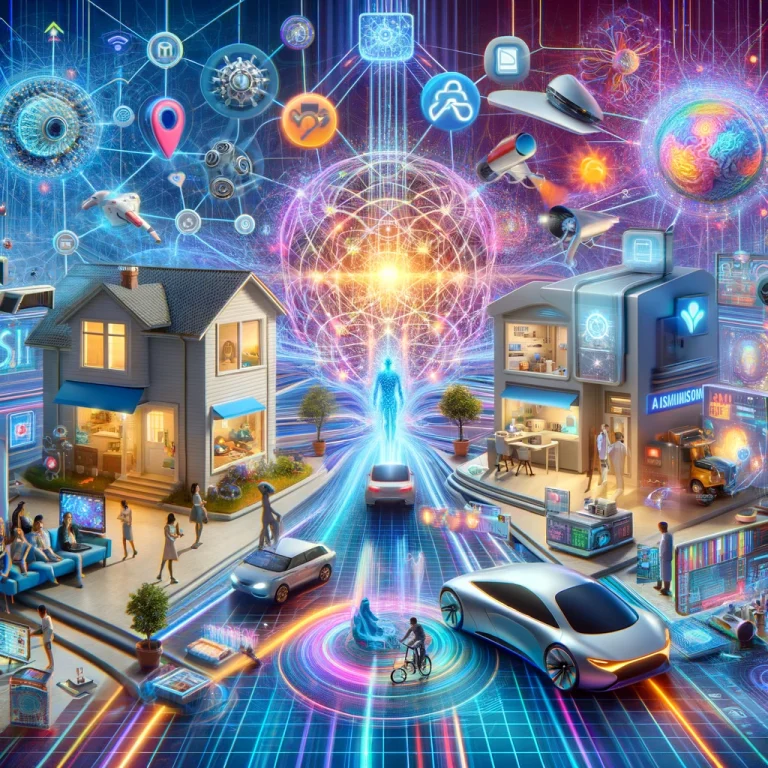Maximizing the Benefits of AI: Practical Tips and Tricks for Everyday Use
Introduction
Artificial Intelligence (AI) is no longer confined to the realm of tech enthusiasts or large corporations. It has seamlessly integrated into our daily lives, offering a multitude of conveniences and efficiencies. From smart home devices to personal assistants, AI can significantly enhance our productivity and lifestyle. This guide provides practical tips and tricks for integrating AI into everyday life, helping you maximize its benefits.
Step 1: Embrace AI-Powered Personal Assistants
Popular AI Assistants
- Amazon Alexa: Alexa is a versatile assistant capable of controlling smart home devices, setting reminders, and providing information on demand. Learn more about Alexa’s capabilities on Amazon Alexa.
- Google Assistant: Known for its powerful search capabilities and integration with Google services, Google Assistant can help manage your schedule and answer queries. Discover more at Google Assistant.
- Apple Siri: Integrated deeply into Apple’s ecosystem, Siri can handle a variety of tasks, from sending messages to playing music. Explore more about Siri at Apple Siri.
Tips for Using AI Assistants
- Voice Commands: Use voice commands to interact with your AI assistant hands-free. This can be particularly useful when cooking, driving, or multitasking. For example, asking Alexa to set a timer or Siri to send a message.
- Routines and Shortcuts: Set up routines or shortcuts to automate multiple actions with a single command. For example, a morning routine can turn on lights, read the weather, and play the news. Check out Google Assistant Routines for more information.
- Integration with Other Devices: Connect your AI assistant to other smart devices in your home, such as thermostats, lights, and security systems, for seamless control. Visit Amazon Alexa Smart Home for setup guides.
Step 2: Automate Routine Tasks
Smart Home Automation
- Smart Lighting: Use smart bulbs and switches to control lighting with your voice or smartphone. Set schedules to turn lights on and off automatically. Learn more at Philips Hue.
- Thermostats: Smart thermostats learn your preferences and adjust the temperature for optimal comfort and energy efficiency. They can be controlled remotely via smartphone apps. Explore options at Nest Thermostat.
- Security Systems: AI-powered security cameras and doorbells provide real-time alerts and can recognize familiar faces, adding a layer of security to your home. Check out Ring Doorbell.
Personal Productivity
- Email Management: Tools like Google’s Smart Reply and Smart Compose use AI to suggest quick responses and help you draft emails faster. Learn more at Gmail Features.
- Scheduling: AI-powered scheduling assistants like x.ai can coordinate meeting times by understanding your availability and preferences.
- Task Management: Use AI-driven task managers like Todoist or Microsoft To Do, which can prioritize tasks and remind you of deadlines.
Step 3: Enhance Entertainment and Learning
Personalized Recommendations
- Streaming Services: AI algorithms on platforms like Netflix, Spotify, and YouTube recommend content based on your viewing and listening habits.
- Reading Suggestions: Services like Kindle and Goodreads use AI to suggest books based on your reading history and preferences.
Educational Tools
- Language Learning: Apps like Duolingo and Babbel use AI to personalize lessons and track your progress in learning new languages.
- Skill Development: Platforms like Coursera and Udemy offer courses that adapt to your learning pace, providing personalized content to enhance your skills.
Step 4: Leverage AI for Health and Fitness
Health Monitoring
- Wearable Devices: Smartwatches and fitness trackers like Fitbit and Apple Watch monitor your activity levels, heart rate, and sleep patterns. AI analyzes this data to provide insights and recommendations.
- Health Apps: Apps like MyFitnessPal and Google Fit use AI to track your diet and exercise, offering personalized advice to help you achieve your health goals.
Mental Health
- AI Therapy: Apps like Woebot and Wysa provide AI-driven mental health support, offering conversations and exercises to manage stress and anxiety.
- Mindfulness and Meditation: AI-powered apps like Headspace and Calm personalize meditation sessions based on your preferences and progress.
Step 5: Explore AI in Shopping and Finance
Smart Shopping
- Personalized Shopping Recommendations: Online retailers like Amazon use AI to recommend products based on your shopping history and preferences.
- Price Tracking Tools: Apps like Honey and CamelCamelCamel track price changes and offer alerts for the best deals.
Financial Management
- Budgeting Tools: AI-driven apps like Mint and YNAB (You Need a Budget) help you track spending, create budgets, and offer financial advice.
- Investment Platforms: Robo-advisors like Betterment and Wealthfront use AI to manage your investment portfolio, offering personalized financial planning.
Conclusion
Integrating AI into your daily life can significantly enhance your productivity, convenience, and overall quality of life. By embracing AI-powered personal assistants, automating routine tasks, enhancing entertainment and learning, leveraging AI for health and fitness, and exploring AI in shopping and finance, you can maximize the benefits of this transformative technology. As AI continues to evolve, staying informed and adaptable will allow you to take full advantage of its capabilities.






